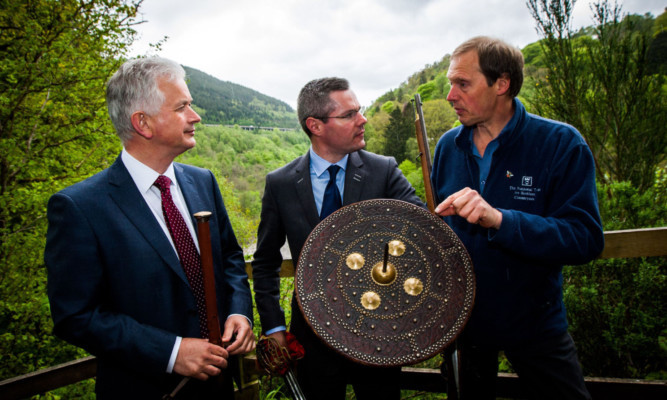A multi-billion-pound expansion of one of Scotland’s deadliest roads will cut through the scene of a bloody Jacobite battle, it has emerged.
Transport Scotland has unveiled proposals for the delicate next stage of its A9 upgrade, which will involve paving over parts of the ancient battleground at Killiecrankie.
The A9 already cuts through the site, north of Pitlochry, but long-awaited proposals to dual the route will cover more of the site where Jacobites famously clashed with government troops in 1689.
Transport Minister Derek Mackay visited the area on Wednesday to announce a major “treasure hunt” of the battle trail before construction begins.
The Scottish Government will bring in a team of metal detectors to work on an area around 650ft on either side of a mile-long stretch of road in summer.
It is hoped more artefacts from the early Jacobean battle will be unearthed.
Previous discoveries have included fragments of one of the first hand grenades used in a British conflict.
Mr Mackay said: “Whilst creating a better understanding of the past, we are investing in our future as part of this A9 dualling work.
“This is obviously a sensitive site because it is a historic battlefield and therefore we will be taking extra care and time to understand the site more clearly.”
He said the search would not delay the overall project, even if items of major significance were uncovered.
“It shouldn’t impact on the dualling work because we have given ourselves the time to do this properly. It won’t derail the investment work.”
Mr Mackay said consultations were now under way on two possible options for the Killiecrankie to Pitagowan section of the project.
Iain Reid, interim chief executive for the National Trust for Scotland, told The Courier: “The existing road goes right the way through the battlefield and ideally we’d rather not build on this area, but given the safety issues of this particular road I think that should take precedence.
“This is a fantastic opportunity as, hopefully, the survey will uncover artefacts and new information that will allow us to understand more about the events of July 27 1689.”
Ben Notely, the trust’s property manager for North Perthshire, said: “The more we’re able to find the better.”
